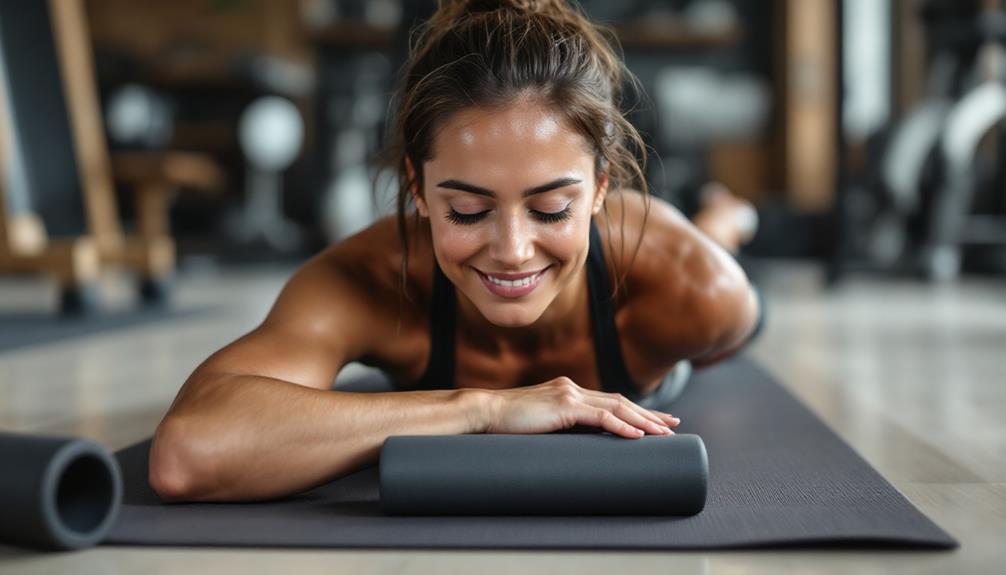To master post-workout cool-down techniques, focus on gradually lowering your heart rate and body temperature. Start with light aerobic activity, then move into stretching key muscle groups used during exercise. Incorporate foam rolling to target tight areas and improve blood flow. Stay hydrated with water or sports drinks, and consider a balanced meal with carbohydrates and protein for best recovery. Don't skip cool-downs, as they help prevent dizziness, reduce muscle soreness, and improve flexibility. By understanding the science behind cool-downs and implementing proper strategies, you'll enhance your fitness gains and minimize injury risks. Dive deeper to access the full potential of your post-workout routine.
Core Insight
- Gradually lower heart rate and body temperature with light aerobic activities like walking or slow jogging.
- Perform static stretches focusing on the main muscle groups used during your workout.
- Use foam rolling techniques to target tight areas and improve blood flow to muscles.
- Rehydrate with water or electrolyte-rich drinks to replace fluids lost during exercise.
- Consume a balanced post-workout meal with carbohydrates and protein to aid recovery and muscle repair.
Understanding Cool-Down Science
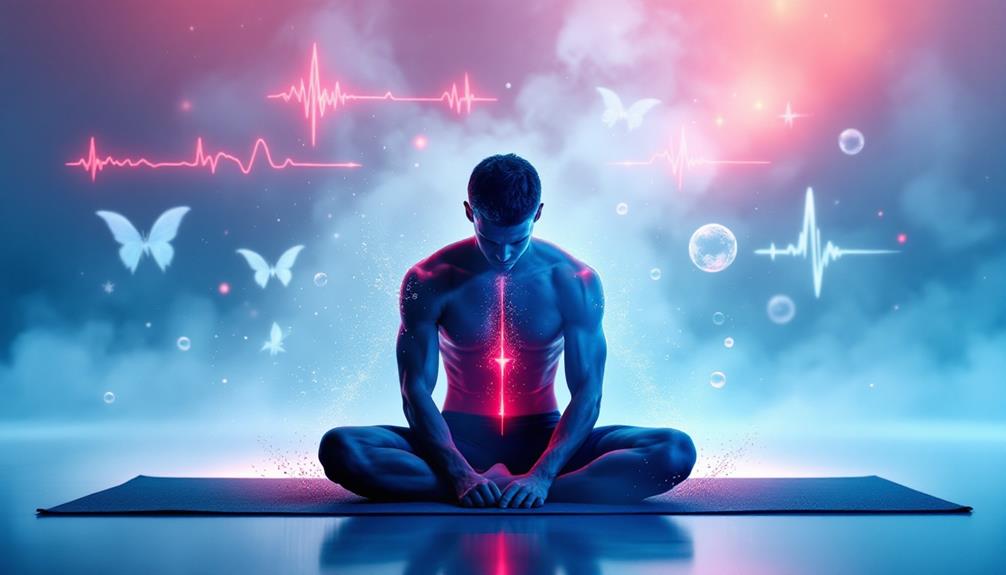
After an intense workout, your body needs time to return to its normal state. This is where cool-down techniques come into play. When you exercise, your heart rate goes up, your blood vessels widen, and your muscles get warm. A good cool-down helps your body transition safely and efficiently. Staying properly hydrated is also important during this time, and electrolyte gummies can help replace lost minerals.
Cool-downs work by gradually lowering your heart rate and body temperature. They also help direct blood flow, which can prevent feelings of dizziness or fainting. As you slow down, your muscles relax and return to their normal length. This helps reduce lactic acid buildup, which can lead to soreness after your workout.
There's also a scientific side to cool-downs related to your nervous system. When you exercise, your body activates the sympathetic nervous system, which is responsible for the "fight or flight" response. A cool-down switches on the parasympathetic nervous system, which promotes relaxation and recovery. Understanding these changes can help you see why a proper cool-down routine is so important.
Benefits of Proper Cool-Downs
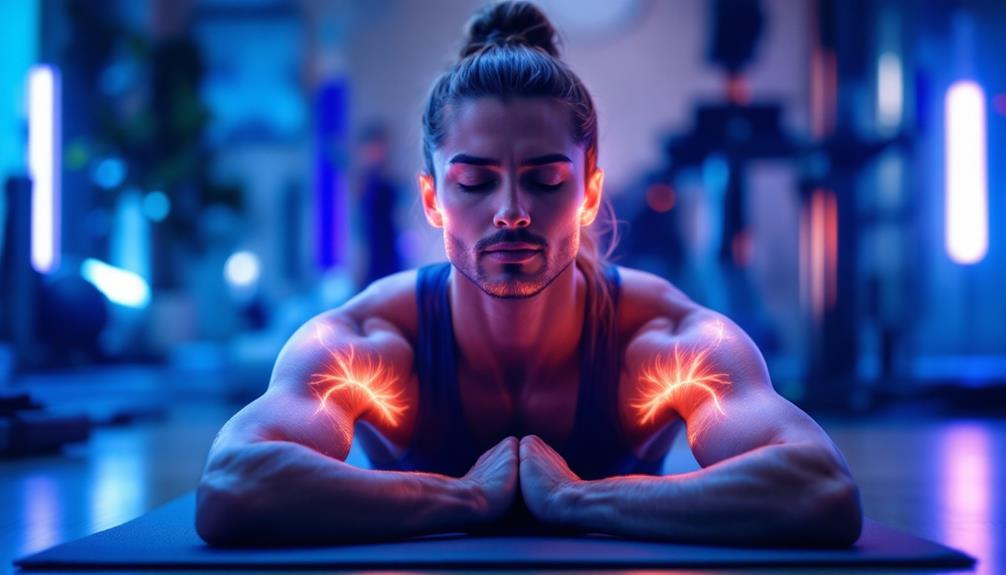
Understanding the benefits of cool-downs after a workout is essential for anyone looking to improve their fitness routine. When you take the time to cool down properly, your heart rate slows down gradually, which helps prevent sudden drops in blood pressure. This can help you avoid feelings of dizziness and the risk of fainting. You can also use cooling gel packs during your cool-down to target sore areas and assist in muscle recovery.
Cool-downs are important for muscle recovery because they promote better blood flow. This helps remove waste products from your muscles and brings in nutrients that aid healing. As a result, you may feel less muscle soreness and stiffness in the days following your workout. Additionally, cooling down can improve your flexibility since your muscles are warm and more adaptable after exercise.
Incorporating regular cool-downs can boost your overall fitness performance by helping your body adjust to exercise stress. They also offer a moment to mentally transition from intense activity to relaxation, giving you a chance to reflect on your workout and set future goals. In short, proper cool-downs are key to a safe and effective fitness routine.
Essential Cool-Down Stretches
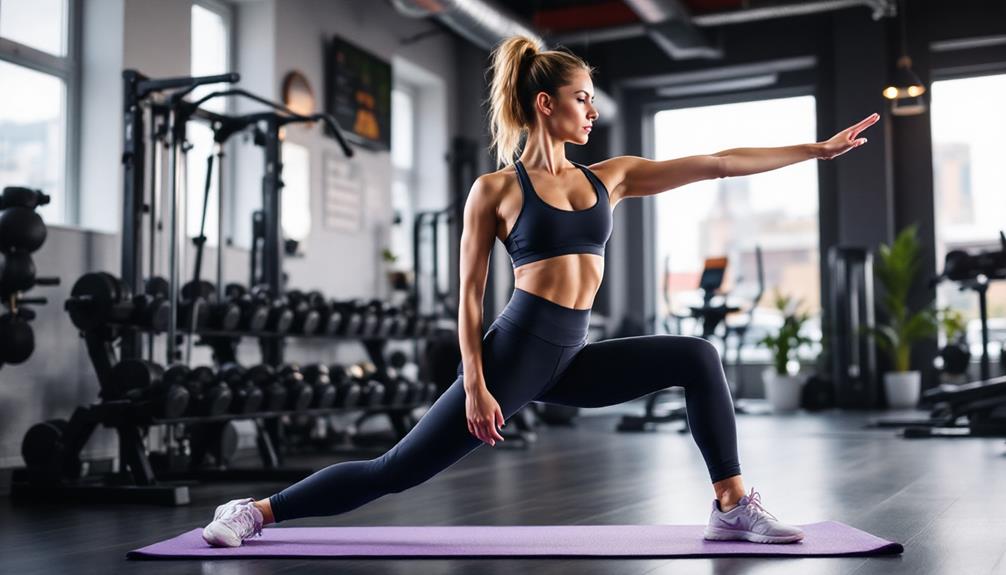
After your workout, it's important to cool down and stretch. This helps your body recover. Focus on the main muscles you used during exercise.
Start with a gentle quad stretch. Stand up and pull your heel towards your butt while keeping your knees together. Next, stretch your hamstrings by sitting down and reaching for your toes with your legs straight in front of you. Don't forget your calves; lean against a wall, putting one leg back with your heel on the ground.
For your upper body, do some shoulder rolls and gentle neck rotations. To stretch your chest, clasp your hands behind your back and lift your arms. For your lower back, lie on your back and hug your knees to your chest.
You can also use a foam roller to help with muscle recovery. It targets tight areas and improves blood flow. Hold each stretch for 15 to 30 seconds and remember to breathe deeply. Stretching should feel good, not painful.
Hydration and Nutrition Strategies

Rehydration and good nutrition are key parts of recovering after a workout. After exercising, your body needs fluids and nutrients to help repair muscles and restore energy. Try to drink water or a sports drink within 30 minutes of finishing your workout. For the best recovery, eat a balanced meal or snack that includes both carbohydrates and protein.
| Nutrient | Function | Example Sources |
|---|---|---|
| Water | Rehydrates the body | Plain water, sports drinks |
| Carbohydrates | Replenishes energy | Fruits, whole grains, starchy vegetables |
| Protein | Repairs muscles | Lean meats, eggs, dairy, legumes |
Pay attention to your body's signals for hunger and thirst. If you're not feeling hungry right away, focus on rehydrating and then have a balanced meal within two hours after your workout. Sticking to a good post-workout nutrition plan will help you recover well and improve your fitness.
Foam Rolling Techniques
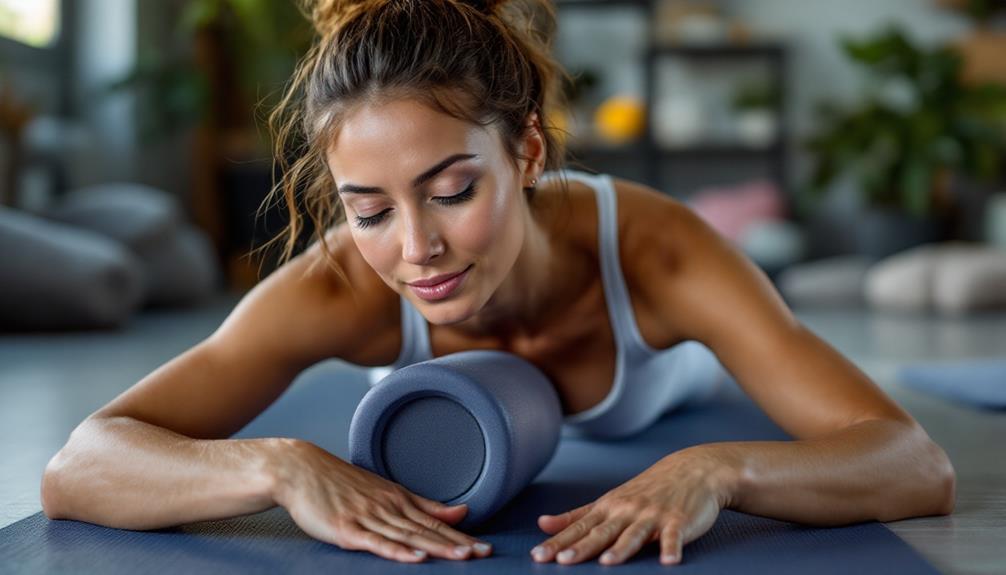
After taking care of your nutrition, it's important to focus on physical recovery. Foam rolling is a great self-massage technique that can help ease muscle tension and boost flexibility. Here's how to add it to your cool-down routine:
- Pick the right roller: Choose a foam roller that fits your needs. High-density foam rollers are good for deep tissue massage and relieving muscle knots. Look for durable materials like EVA and polypropylene for long-lasting use.
- Target key muscle groups: Focus on your back, glutes, quads, hamstrings, and calves.
- Apply pressure: Roll slowly over each muscle group. If you find a tight spot, pause for 20-30 seconds.
- Breathe deeply: Keep your breathing steady to help your muscles relax.
- Roll for 5-10 minutes: A short session is usually enough, so don't overdo it.
- Listen to your body: If you feel sharp pain, stop rolling that area.
Following these steps can help improve your recovery and keep your muscles feeling good.
Incorporating Mindfulness and Relaxation

Your cool-down routine isn't finished until you take care of your mental state. Adding mindfulness and relaxation techniques can help you transition from a tough workout to a calm and focused mindset. Here are a few simple practices to try:
- Deep breathing: Take slow, controlled breaths to lower your heart rate and promote relaxation.
- Body scan: Mentally check in with your body from head to toe, noticing any tension or discomfort.
- Visualization: Picture a peaceful scene or envision a successful performance to lift your mood and motivation.
To help you integrate these techniques, here's a quick guide:
| Technique | Duration | Benefits |
|---|---|---|
| Deep breathing | 2-3 minutes | Reduces stress, lowers heart rate |
| Body scan | 3-5 minutes | Increases body awareness, eases tension |
| Visualization | 2-3 minutes | Improves mood, boosts motivation |
| Meditation | 5-10 minutes | Promotes relaxation, enhances mental clarity |
Incorporating these practices can make your cool-down routine more effective and enjoyable.
Frequently Asked Questions
How Long Should a Cool-Down Session Last?
You should aim for a cool-down session lasting 5-10 minutes. It's important to listen to your body and adjust the duration based on your workout intensity. Don't rush it; take the time to gradually lower your heart rate.
Can I Skip Cool-Downs for Shorter Workouts?
You shouldn't skip cool-downs, even for shorter workouts. They're essential for gradually lowering your heart rate and preventing dizziness. A brief 5-minute cool-down can still provide benefits and help your body shift to a resting state.
Is It Necessary to Cool Down After Low-Intensity Exercises?
You're so exhausted from that gentle stroll, aren't you? Even after low-intensity exercises, you'll benefit from cooling down. It'll help regulate your heart rate, prevent dizziness, and reduce muscle stiffness. Don't skip it, champ!
Should Cool-Down Routines Differ for Morning and Evening Workouts?
Yes, your cool-down routines should differ slightly for morning and evening workouts. In the morning, focus on energizing stretches to wake your body up. For evening workouts, emphasize relaxation techniques to help you wind down for sleep.
Are Cool-Downs Equally Important for All Age Groups?
Cool-downs are essential for all age groups, but they're especially vital as you get older. You'll find that they help reduce muscle soreness, prevent dizziness, and improve flexibility. Don't skip them, regardless of your age!

